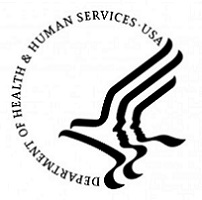 The U.S. Department of Health and Human Services (HHS) (@HHSGov) is releasing new hospital COVID-19 capacity data at the facility level. Previously released data about hospital capacity that had been released was aggregated at the state level. This new, more granular, data release aggregates daily hospital reports into a “week at a time” picture to protect patient privacy, while providing a view of how COVID-19 is impacting hospitals and local communities across the country.
The U.S. Department of Health and Human Services (HHS) (@HHSGov) is releasing new hospital COVID-19 capacity data at the facility level. Previously released data about hospital capacity that had been released was aggregated at the state level. This new, more granular, data release aggregates daily hospital reports into a “week at a time” picture to protect patient privacy, while providing a view of how COVID-19 is impacting hospitals and local communities across the country.
With this data release, how hospitals are impacted by COVID-19 will be shown on a per-hospital basis, allowing researchers, policy makers, and others to have greater insights into local COVID-19 response efforts. This time series data will update weekly, going back to August 1, 2020.
When data are aggregated at county or state level, the average across all facilities can mask what is happening at each local hospital. Some hospitals might have additional capacity to treat COVID-19 patients, while others lack that capacity, for example. Using this new data, the public will have access to hospital-specific COVID-19 numbers to understand hyper-localized community impacts. This new level of transparency and increased access will accelerate COVID-19 insights and understanding.
COVID-19 Open Data
HHS will not be a gatekeeper of the data but will serve as a gateway to the COVID-19 open data. The public will be able to find more COVID-19 information on HealthData.gov, the home of HHS open data. These COVID-19 datasets are also discoverable and downloadable on Data.gov, the home of U.S. government data with a federated, harvest model that pulls information from HealthData.gov.
Specifically, HHS is releasing U.S. COVID-19 data reported by hospitals and facilities at the facility level— including partial data submissions, which hospitals and facilities may update and complete over time. This time series data will update weekly, going back to August 1, 2020. These datasets will enable academics, data scientists, and all Americans to see how COVID-19 cases are impacting individual hospitals and local regions. Information is available to any and everyone who wishes to explore or analyze the information at the facility, county, metropolitan, and regional level:
- Temporal changes and patterns
- Geographic changes and patterns
- New admission trends, including age brackets
- Severity of disease, such as patients in ICU or on ventilators
- Capacity constraints, including the relative impact of COVID-19 patients on the facility
- Impact to the emergency department
- Trends and impacts at the individual facility level that are not recognizable in county or state views
- Patterns in influenza and coinfections of influenza and COVID-19
HHS expects these datasets will help local and regional resource planning efforts, including collaborations between different hospitals regarding staff and equipment. Communities will be empowered with high-resolution information to guide their decisions about building operations, closures, and openings. City and county officials who do not already have comprehensive access to this type of hospital-level data can now be informed by regional trends and individual hospital capacity.
These COVID-19 datasets will empower local minority, racial, and ethnic communities with information relevant to them. This information on changing hospital capacity and local resources will enable community-driven responses and local choice. Quantifying regional impacts can help combat misinformation about the severity and seriousness of the pandemic within communities.
Entrepreneurs and researchers can use these datasets to build novel data analysis tools and approaches. Data scientists are encouraged to detect, predict, and visualize insights and patterns in this high-resolution data. Such COVID-19 insights can identify what works, what is failing to work, and how we might scale best practices in one locality for other regions to collectively optimize the U.S. data-driven response.
The data reporting is one part of the whole-of-government response and is to ensure that every patient requiring hospitalization receives the care they need. Patients should not be discouraged from seeking hospital care based on their interpretation of the data. Hospitals have protocols in place to keep patients safe from exposure and to ensure all patients are prioritized for care.
For more information, go to the HealthData.gov blog, “COVID-19 is Complex, as is COVID-19 Open Data” article and Frequently Asked Questions (FAQs) about this hospital-level data.
